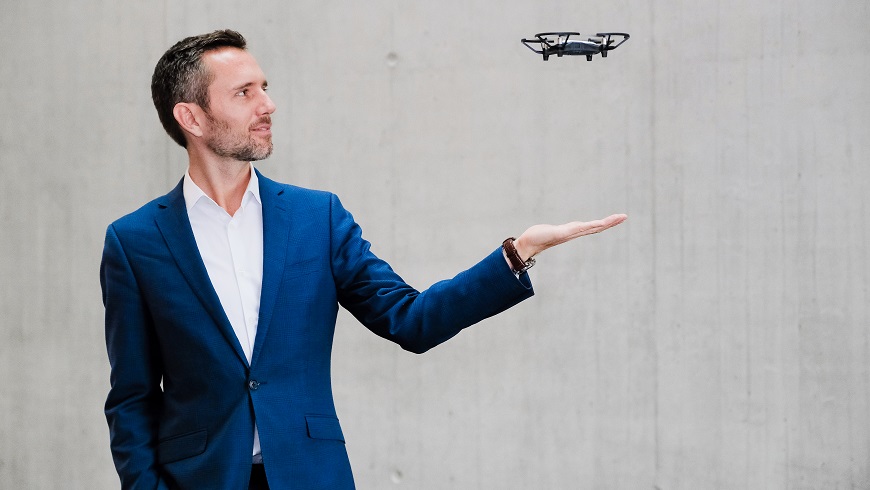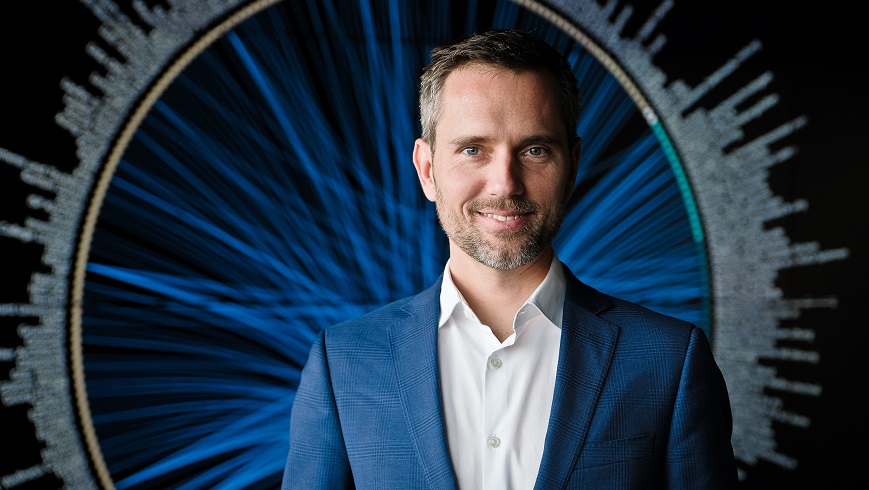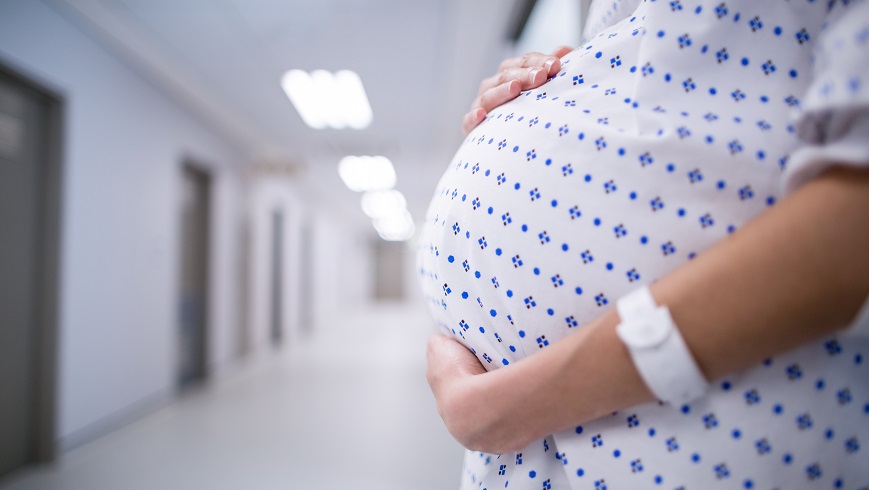Mirko Kovac
Vertical take-off
Mirko Kovac is heading the new Materials and Technology Center of Robotics of Empa and Imperial College London. Together with his team, he develops drones and flying robots, which are supposed to help autonomously with building maintenance, for instance. And incidentally he is kicking off a revolution: he wants to build “living” machines. The drone researcher is also presenting his strategies at Swissbau in Basel.

The man actually loves machines. And life, too. And now he intends to merge both. Mirko Kovac is developing robots and drones that, thanks to their biological properties, can merge the digital intelligence of computers with the physical intelligence of biological systems. Driven by the vision of a society, in which people are assisted by machines to a degree that corresponds to a real “cohabitation”, he has been head of the newly established Materials and Technology Center of Robotics in Dübendorf since last year. Currently, a flight arena for drones, which could be used to maintain buildings, for example, is being built in the joint center of Empa and Imperial College London. With his team, Kovac wants to advance the area of infrastructure robotics so that applications can be developed for dams, tunnels, wind turbines or offshore facilities.
An urgent current problem: Workers working on scaffolding or at great heights, for example, are exposed to an enormous risk of accidents. Drones that work safely and efficiently even in danger zones or in places that are difficult to access could provide human specialists with useful support in these tasks.
Mirko Kovac
CARREER After studying mechanical engineering at ETH Zurich, Kovac received his doctorate from the Laboratory for Intelligent Systems at EPFL in Lausanne. He then worked as a postdoctoral fellow at the Harvard Microrobotics Laboratory at Harvard University in Cambridge, USA.
SCIENCE Mirko Kovac has headed the Materials and Technology Centre for Robotics at Empa since December 2018. He is also Director of the Aerial Robotics Loboratory at Imperial College London and Royal Society Wolfson Fellow. His research focuses on the development of flying and soft robotic solutions for digital infrastructure systems.
Drones in the kitchen
“We will develop and validate such applications in our new flight arena,” explains the researcher. Kovac, who also heads the Center of Excellence for Infrastructure Robotics Ecosystems at Imperial College, already operates a complementary flight arena in London. In addition to Empa’s expertise in materials science, another unique feature of the conditions at Empa is the existing test site for his developments: The NEST research building on the Empa-Eawag campus.
Here, the drones and robots are to be observed at work and optimized in a real-world environment. The modular innovation building NEST is particularly suitable for observing the “ecosystem” of man and machine, as it is by definition subject to a permanent rebuilding process, so that the robots can expect a multitude of possible tasks. “We have the opportunity to investigate the interactions between robots and humans in reality,” says Kovac. How it is to cooperate with a robot, or whether or not a drone interferes in the kitchen, can be studied in real-life everyday situations, which, at the same time, can be analyzed scientifically.
Kovac, who after completing his degree at ETH Zurich and his doctoral thesis at EPFL worked all over the world in robotics research, among others at the renowned US universities Harvard and Berkley, considers Switzerland a strong location that is rightly called the “Silicon Valley of robotics”. The density of research institutions and the diversity of expertise are pleasingly high by international standards. He is sure that Switzerland can be at the forefront, especially in the area of the intersection of materials science and robotics.
The researcher wants to trigger nothing less than a revolution. While classical robotics has dealt with sensor technology and the control of a machine by a computer, Kovac wants to go further. “The pure digital intelligence of a computer is not enough to develop applications that can spontaneously react to the environment in all its imponderability,” he says. A physical intelligence, through intelligent materials and structures, makes a machine a being that can be integrated into society. Functionalities based on nature and biological materials will ultimately enable the construction of biohybrid robots.
The biology of the machine
The fusion of machines with “bios”, ancient Greek for life, is for Kovac – within certain limits – a declared goal and not a taboo. He is by no means interested in creating a chimera of animal and robot, but rather in equipping mechanical aids with certain characteristics of life, especially the ability to interact with their environment. “The robots and drones should be able to react intelligently, autonomously and robustly to their environment,” he explains.
Since childhood Kovac, now 39, has been fascinated by what holds machines together at their core. “As a child, I disassembled Swiss watches because I had to find out where the “heart” of the watch beats,” he says. At the same time, he was fascinated by the highly specialized abilities of animals to live perfectly adapted in their ecological niches. This childlike fascination has grown out of the mechanical engineer’s realization that “living” machines can be developed through inspiration and creativity if organic or biologically inspired, smart materials and structures are combined with sensor technology and computing capacity. Kovac is convinced that this creativity is fostered by a strong, multidisciplinary team of scientists who not only do their research in a focused, but at the same time in a networked and broadly holistic manner.
At Empa, Kovac and his team are now developing robots and drones that are supposed to have completely new capabilities thanks to “soft” functional materials. This makes it possible, for example, to carry out autonomous inspections of components or quickly contain damage, for example in the event of pipeline leaks. He is not only cooperating with his colleagues at Imperial College, but also with Swiss experts through Empa’s participation in the National Center of Competence in Research (NCCR) “Robotics – Intelligent Robots for an Improved Quality of Life” led by ETH Zurich and EPFL. He is aware that a topic such as the coexistence of humans and robots can trigger both concerns and enthusiasm in society. “It is one of the tasks of research to critically question results and communicate real risk assessments to decision-makers,” says Kovac. Even his love of machines cannot stop him from doing so.
SWISSBAU 2020
In 2020, NEST will again be present at Swissbau. Together with its partners, NEST is inviting visitors to Swissbau Focus for exciting workshops on the topics of "Energy in the neighbourhood" and "Resource-efficient, loop-friendly construction". The NEST team will also be present at various events during the fair and at the stand (F07) in Hall 1.0 South. Swissbau will open its doors from 14-18 January 2020.
Drone researcher Mirko Kovav presents his work within the event «Planung und Wirklichkeit – eine Abweichung mit Konsequenzen?». Messe Basel, Halle 1.0 Süd, Swissbau Focus, Room 1, 14.15 -15.45, together with SCCER FEEB&D and SIA
Dr. Andrea Six
Communication
Phone +41 58 765 61 33
Swissbau Event "Planung und Wirklichkeit - Eine Abweichung mit Konsequenzen?"
Follow us on Social Media
-
Share

Alternative cement recipes
A recipe for eco-concrete
Cement production has to drastically reduce its environmental footprint. Empa researchers are, therefore working on alternative cement recipes that cause significantly fewer emissions or can even bind the greenhouse gas carbon dioxide. More.

Preeclampsia
Save diagnosis for mother and child
Preeclampsia is a particularly dreaded pregnancy complication that threatens the lives of mother and child. A correct diagnosis, however, is currently time-consuming and, in many cases, inaccurate. The Empa spin-off “MOMM Diagnostics” is developing a fast and precise test that provides diagnostic certainty and at the same time saves healthcare costs. More.

Renovation
The path to an energy-efficient building park
Heating, hot water and private electricity consumption consume large amounts of energy and cause high CO2 emissions. Energy-efficient renovations of buildings can reduce this consumption – but how is the money best used for which type of building? Empa researchers have investigated this question. More.





